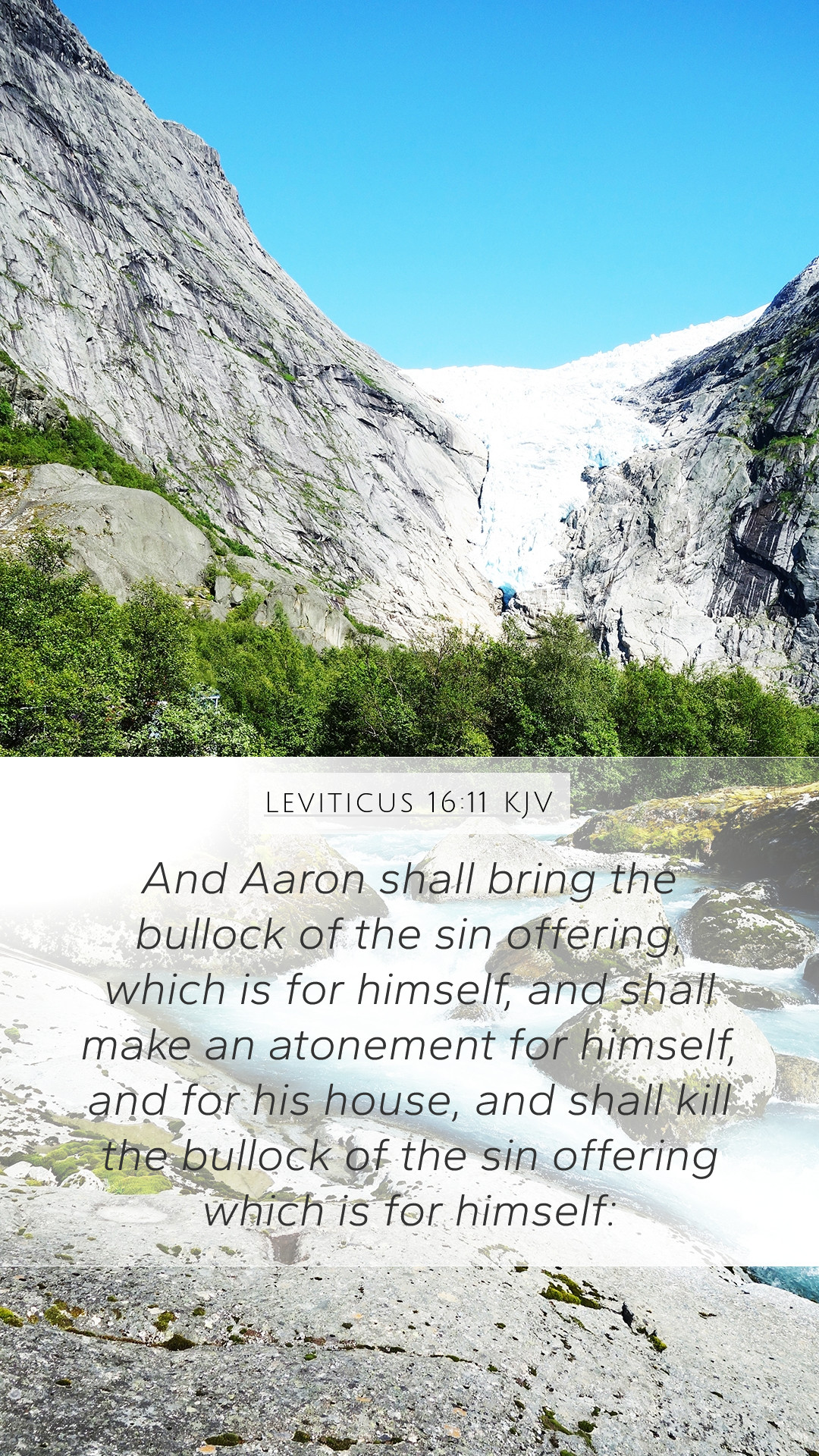Bible Verse Commentary on Leviticus 16:11
Leviticus 16:11 reads: "And Aaron shall bring the goat upon which the lot fell to be the scapegoat, and shall present him alive before the Lord, to make an atonement with him, and to let him go for a scapegoat into the wilderness." This verse is rich in meaning and significance, serving as a pivotal point in understanding the symbolism of the Day of Atonement (Yom Kippur) in the ancient Israelite sacrificial system.
Connection to Atonement and Sacrifice
According to Matthew Henry, this verse illustrates the process of atonement, emphasizing the need for a mediator between God and man. The "scapegoat" symbolizes the removal of sin, representing how God requires a sacrifice to cleanse His people from transgression.
Significance of the Scapegoat
Albert Barnes points out that the term "scapegoat" has become synonymous in modern language with someone who is unfairly blamed for others. In the context of Leviticus 16:11, the scapegoat carries the sins of the people symbolically into the wilderness, illustrating God's forgiveness and the complete removal of sin. This practice served as a profound reminder of the consequences of sin and God's mercy in providing a way for cleansing.
The Role of Aaron
Adam Clarke elaborates on Aaron's role as the high priest, indicating that he was chosen to perform this sacred duty. The act of laying hands on the scapegoat transferred the sins of the nation onto the animal, symbolizing the people's guilt and the need for divine forgiveness. This moment marked a significant ritual in the Jewish faith, reaffirming the relationship between God and His people.
Understanding the Ritual in Context
The ritual surrounding the scapegoat is part of a larger framework set forth in Leviticus. Bible verse meanings can be deepened by understanding the cultural and historical context. The Israelites were instructed to carry out specific rituals that showcased their faith and dependence on God, utilizing tangible expressions of obedience to reinforce their covenant relationship.
Symbolism in Leviticus 16:11
The scapegoat serves several symbols:
- Forgiveness: The act of releasing the goat into the wilderness symbolizes the complete pardon of sins.
- Separation from Sin: It signifies the removal of sin from the community, emphasizing God's desire for holiness.
- Substitutionary Sacrifice: The goat represents Christ, who bore the sins of humanity in the New Testament understanding.
Biblical Exegesis and Application
In understanding Scripture, exploring the nature of atonement is paramount. The act described in Leviticus 16:11 is not merely historical but is foundational for comprehending subsequent teachings in the New Testament, where Jesus is often referred to as the ultimate sacrifice for sin.
Connections to the New Testament
Cross-references that deepen the understanding of this verse include:
- Matthew 27:46: Jesus bearing our sins on the cross.
- Hebrews 9:7: The high priest's role in making atonement.
- 1 Peter 2:24: Christ as the sacrificial lamb who takes away sins.
Conclusion: The Importance of Contextual Study
This verse offers a rich ground for Bible study insights, encouraging believers to delve deeper into how ancient practices inform modern theology. For those engaged in online Bible study, it is vital to explore the layers of meaning behind verses like Leviticus 16:11. Understanding the context enhances Bible study resources and helps draw practical applications for everyday life.
Reflections and Insights
As individuals reflect on Leviticus 16:11, they should consider how the principles of sacrifice and atonement apply to their lives today. Applying these lessons can lead to a deeper relationship with God and a holistic understanding of His grace and mercy, moving beyond mere ritualistic practices to a genuine faith experience.


